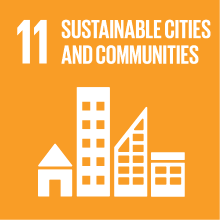THE MAGNIFICENT PERIPHERY OF THE EMPIRE: ROME BYZANTIUM VENICE
- Academic year
- 2018/2019 Syllabus of previous years
- Official course title
- LA SPLENDIDA PERIFERIA DI UN IMPERO: ROMA BISANZIO VENEZIA
- Course code
- NU001A (AF:294539 AR:162262)
- Modality
- On campus classes
- ECTS credits
- 6
- Degree level
- Minor
- Educational sector code
- L-FIL-LET/07
- Period
- 2nd Semester
- Course year
- 1
- Where
- VENEZIA
- Moodle
- Go to Moodle page
Contribution of the course to the overall degree programme goals
Within the "Minor", the module "The beautiful periphery of an empire" explores the history of the city from an unusual perspective, which allows students to place medieval Venice in the vast context of political, commercial and cultural exchanges with the Eastern Mediterranean.
The module aims also to introduce the students to "public humanities" and to how to design cultural heritage projects.
Expected learning outcomes
- will know the most important events in the history of political, cultural and economic relationships between Venice and Byzantium;
- will be able to identify the key sites of the medieval city and the Venetian heritage of the Byzantine culture;
- will be able to create projects for public engagement and promotion of history and cultural heritage of the city;
- will understand and correctly use terms and concepts of the medieval history of Venice;
- will improve the ability to design dissemination projects and to work in team.
Pre-requirements
Contents
The theoretical part includes (15 hours)
1) history of Venice in the Middle Ages and its political, cultural and economic relations with Byzantium
2) the places of Byzantine culture in Venice
3) introduction to "public humanities".
The module will be taught by the teacher in charge of the course (Byzantine History, Alessandra Bucossi) in collaboration with teachers, or experts, of art history, medieval history, etc.
The practical part includes (15 hours)
- group work on public engagement and promotion of the history and the cultural heritage of the city.
Referral texts
Concina, E. Le arti di Bisanzio: secoli VI-XV. Milano, 2002.
Evans, H., Wixom, W. The Glory of Byzantium: Art and Culture of the Middle Byzantine Era, A.D. 843-1261. New York, 1997.
Picchio Forlati, M.L. (ed.) Il Patrimonio culturale immateriale di Venezia e del Veneto come patrimonio europeo. Venezia, 2014
Ferrarese, P. Elementi di project management e modelli di report per le aziende culturali. Venezia, 2016.
Further readings:
Nicol, D. M. Byzantium and Venice: A Study in Diplomatic and Cultural Relations. Cambridge, 1992.
Benzoni, G. L’eredità greca e l’ellenismo veneziano. Firenze, 2002.
Ravegnani, G. Bisanzio e Venezia. Bologna, 2006.
Chrysostomides, J. Byzantium and Venice, 1204-1453: Collected Studies. Farnham, 2011.
Orlando, E. Venezia e il mare nel Medioevo. Bologna, 2014.
Orlando, E. Venezia. Spoleto, 2016.
Assessment methods
The final mark of the project depends on the structure of the project, its coherence, its cultural and historical references, the budget.
These are the "marking criteria" of the oral examination:
30 cum laude
Overall: Outstanding answer: exceptionally well structured and informed, showing striking personal insight and originality.
Understanding: Authoritative; full understanding of relevant material; highly original analysis; highly independent and critical judgment; high degree of precision.
Selection & Coverage: Unusually extensive range of sources, applied with outstanding insight; exceptionally effective use of evidence to support argument.
Oral presentation: Excellent, well-focused presentation contributing to a highly compelling argument.
29-30/30
Overall: Highly thoughtful answer informed by wider reading, showing clarity of thought, personal insight and originality.
Understanding: Thorough understanding of relevant material; insightful discussion; evidence of independent and critical judgment.
Selection & Coverage: Extensive range of sources applied insightfully; very effective use of evidence to support argument.
Oral presentation: Very good presentation; clear and fluent; compelling argument.
28-29/30
Overall: Thoughtful answer informed by wider reading, showing clarity of thought and personal insight.
Understanding: Thorough understanding of relevant material; insightful discussion and analysis.
Selection & Coverage: Extensive range of sources applied insightfully. Effective use of evidence to support argument
Oral presentation: Well structured and focused; clear and fluent; persuasive argument.
27-28
Overall: Good understanding of relevant material; coherent and logical argument.
Understanding: Good understanding of important facts and concepts; substantive analysis of key issues.
Selection & Coverage: Good use of relevant sources/literature; employment of a range of evidence to support argument.
Oral presentation: Coherent and logical presentation.
26-27
Overall: Sound understanding; limited analysis.
Understanding: Generally sound understanding of relevant material but limited range or depth; more descriptive that analytical.
Selection & Coverage: Appropriate but limited use of sources/literature; attempts to support argument, but these are awkward and/or unconvincing.
Oral presentation: Generally clear presentation but awkward structure and/or limited development of argument.
23-25
Overall: Basic understanding and analysis.
Understanding: Some general knowledge but little detail; minimal demonstration of analytical thought.
Selection & Coverage: Sparse coverage of basic material; generally unsuccessful in using evidence to support argument.
Structure: Adequate structure and presentation, but unclear or disorganized in places.
18-23
Overall: Unsystematic, incomplete and/or inaccurate.
Understanding: Some knowledge but poor understanding; numerous inaccuracies; meaning often unclear; poor analysis.
Selection & Coverage: Inappropriate and/or very minimal use of sources/literature; poor use of evidence to support argument.
Oral presentation: Disorganised and unclear presentation; incoherent argument; limited technical lexicon
Teaching methods
The theoretical part (15 hours): lectures and further readings on the platform https://moodle.unive.it/
The practical part (15 hours) will consist of group work led by teachers and drafting of a project.
Teaching language
Further information
Type of exam
2030 Agenda for Sustainable Development Goals
This subject deals with topics related to the macro-area "Cities, infrastructure and social capital" and contributes to the achievement of one or more goals of U. N. Agenda for Sustainable Development


